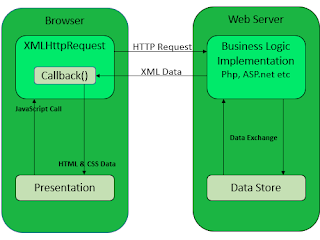Structure Of Nodejs API
Structure Of Nodejs API
NodeJS of API
When he begins to develop the NodeJS project and learns all the basic things, the first thing that comes to mind (at least ii) is: "Now, how to build a real project that solves a real problem?". At this point, just write a few small projects to do some interesting things, but it's not like a project that is ready for production.
Obviously, the answers to these basic questions should be answered before beginning to think about the project in the project:
• What problem do you want to solve?
• Is NodeJS the right technology?
• What is the NodeJS project?
• What other categories, applications, programs, database projects will be addressed?
Since I will show you the beginning to describe the construction of the NodeJS project recently based on NodeJS working for a year, the real project is a retail company.
context
The first thing you should know is the meaning of the project. In this case, I will explain the fatal situation. Tell them you need to make the solution with the following responsibilities:
• The registry must store basic services to the client.
• you have to connect some API (REST, SOAP) for some logical reasoning.
• The second group will take a lot of time for the future of the interface, for example, a mobile application.
• Must be flexible.
• "We need it as soon as possible" (we say that we are talking about Mvp with a client)
In short, you need to develop scalable services without the need for a different application, and it must be integrated into other software components.
Architecture
Now that we have the meaning of what we need to develop, we can define the structure.
In this case, using NodeJS is the correct option for the development of the application that is described in the following reasons:
• It will not work anymore
• Moderate software. Other services make it difficult to elevate.
• Many requests must be made from several sources. (Asian behavior is a good thing)
• MVP, you write Javascript instantly :)
NodeJS modules
Under the proposed project, we will use the basic NPM requirements:
Express: this is a NodeJS website, which is perfect for managing HTTP requests, creating postsecondary content, etc. We will use it to inform you about the application.
Axios: the beautiful module that you want to use to communicate with other communications is very easy, promise the HTTP client that called Axios. You can use simple terms (for example, only HELI or POST applications), as well as a more complete implementation of email addresses specifically for disposal, storage, etc.
Sequalize: this is the promise of ORM for NodeJS, which can be used to copy and paste data from a different database (MySQL, MSSQL, PostgreSQL, SQLite). You can manage trips, questionnaires, interactions, creativity and more.
PM2: this tool helps you manage production systems based on nodes.
ShipitJS: installation device (replacement of Capistrano for the development of NodeJS).
Obviously, you can use many NPM modules, but in that case, you guessed only some of the modules, which I find very useful and you can use a very advanced project base.
Structure:
NodeJS / JavaScript has the characteristic that some people become useful, but you can be profoundly mistaken in that, and that is the freedom to choose the way you want to configure your project (remember that I am NodeJS such as metal or network.). Only work experience in different projects will allow you to determine the best way to handle each situation.
Conclusion
The structure of the map follows the simple idea. Do not drive anything, easy! Maybe the project is easier than what we use, for example, here and go for it :)
What happens if the project is increasing? The modularized structure that gathers very important sub-folders that represent different parts of your application (for example, user administration, statistics, etc.). Another modularization is to create projects and each of them is used in a different process or service so you can access several independent projects (this is called Microservices).
Thank you for reading! We hope you have created this company soon as a small project, to execute it.
To getting expert-level training for Angularjs Training in your location-Angularjs training in Chennai| Angularjs training in Chennai | Angularjs training in Chennai | Angularjs training in Velachery | Angularjs training in Tambaram | Angularjs training in sholinganallur | Angularjs training in Annanagar | Angularjs training in Bangalore | Angularjs training in Bangalore | Angularjs training in btm | Angularjs training in marathahalli | Angularjs training in electronic city | Angularjs training in pune| for getting online training Angularjs online training| Angularjs training in USA




Excellent post!!!. The strategy you have posted on this technology helped me to get into the next level and had lot of information in it.
ReplyDeleteDevOps Training in chennai
DevOps Training in Bangalore
It’s great to come across a blog every once in a while that isn’t the same out of date rehashed material. Fantastic read.
ReplyDeletesoftware testing training chennai | software testing course chennai
ReplyDeleteIt’s great to come across a blog every once in a while that isn’t the same out of date rehashed material.
Selenium Course Training in Chennai |Best Selenium Training Institute in Chennai
Thanks a lot very much for the high quality and results-oriented help.
ReplyDeleteUIpath Training in Chennai
Big Data Hadoop Training in Chennai
Linux Training in Chennai
Your very own commitment to getting the message throughout came to be rather powerful and have consistently enabled employees just like me to arrive at their desired goals.
ReplyDeleteAngularjs Training Fees in Chennai
Best Java Training Fees in Chennai
Best Bigdata Hadoop Training Fees in Chennai
Best SAS Training Fees in Chennai
Best Python Training Fees in Chennai
Best Software Testing Training Fees in Chennai